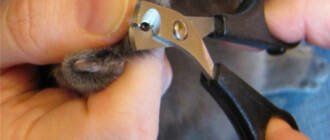The process is unfamiliar and painful for the cat, so it is not recommended to start an enema without preparation.

- How to give a cat an enema
- When an enema can help the cat
- Can it be used for constipation?
- Composition and expiration date
- How to give a cat an enema with constipation correctly – step by step instructions
- Step one: Prepare the necessary tools
- What not to do
- How to give an enema to cat at home
- Recognize when an enema is needed
- How to give an enema to a cat: algorithm of actions
- What you need to prepare
- Technique
- Prevention of constipation
- Recommendations for preparing for an enema
- Microlax
How to give a cat an enema
Even a healthy cat is not immune to constipation, which may be caused by various factors, such as improper feeding or lack of liquid in the diet, accumulation of hairballs in the intestines, endocrine and kidney ailments. An effective and relatively safe remedy for constipation is an enema, but it can not always be done. We will try to understand in what situations, and how to correctly give the cat an enema.
We'll agree at once that you can give the cat an enema at home only after consulting with your veterinarian. The fact is that there are a number of ailments in which the use of an enema not only will not be beneficial, but may also provoke a deterioration in the condition of the animal. So, you should not perform the procedure in the following situations:
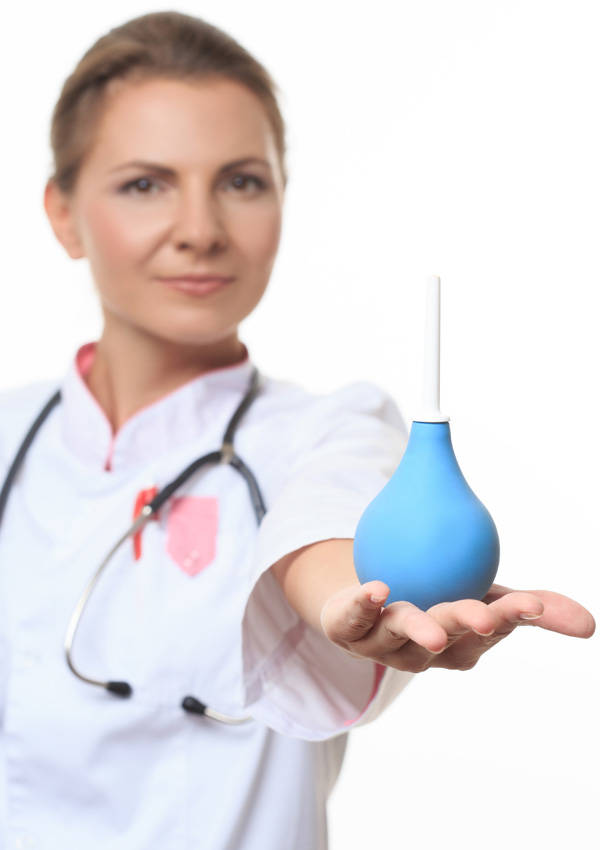
- Pregnancy of the cat (especially at a late stage);
- Foreign bodies in the intestine;
- Intestinal congestion;
- Diseases of the heart and blood vessels;
- Intestinal oncoprocesses;
- Hemorrhoid bleeding, fissures of the anus;
- Helminthiasis in an advanced stage;
- Inflammatory bowel disease in the acute stage;
- Any bleeding of the gastrointestinal tract organs.
Given that there are many contraindications, you should at least talk over the phone with a specialist who will advise whether the cat can have an enema in a particular case.
When an enema can help the cat
Now let's understand when an enema for a cat at home is allowed. Without the help of a veterinarian, you can do without help only when the pet has harmless constipation, accompanied by the following symptoms:
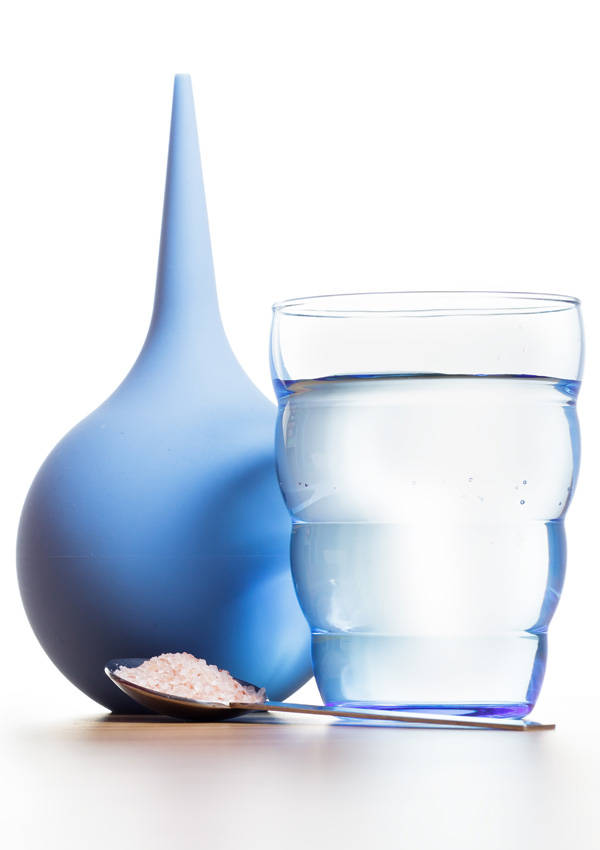
- Absence of stool for no more than 3 days (or presence of stool, but provided that when the bowels are emptied a small amount of stool comes out, which is too dry and cracked, similar to goat balls);
- Absence or worsening of appetite;
- Discomfort in the cat when touching the abdomen (the pet may bend its lower legs, hide from the owner);
- Stiffness and increase in the volume of the abdomen (it may appear as if the pet has simply overeated);
- Restless behavior (sometimes the pet will often run to the litter box, try to poop, but will quickly leave without going to the toilet);
- Apathy (the pet stops playing and does not pet);
- Vomiting may occur occasionally.
All of the above symptoms signal that the animal is not able to empty its bowels fully and independently. That is, an enema can help. But it is important for the owner to know that self-treatment is unacceptable if the cat is present:
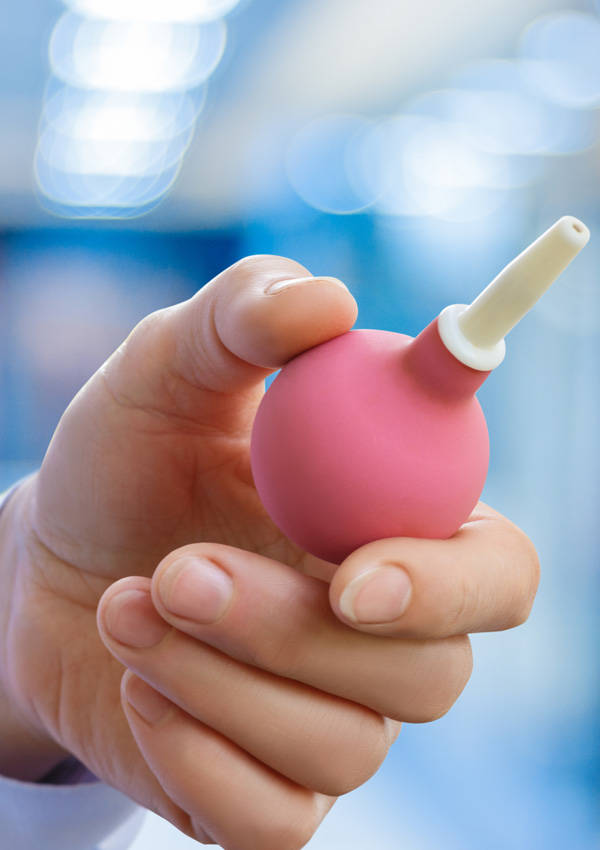
- High body temperature (more than 39.5-40 degrees);
- Severe abdominal pain (the first sign of pain is the cat's pathetic meow);
- Complete lack of appetite and thirst or increased thirst;
- Uncontrollable vomiting (often stinky or with particles of parasites, in case of internal bleeding – bloody);
- Tachycardia (if heart rate is more than 230 beats per minute);
- Severe gassiness;
- Heavy breathing, shortness of breath;
- Pallor of mucous membranes;
- Blood discharge from the anus;
- Swelling and redness of the anus;
- Changes in gait and lack of coordination;
- Increased or decreased blood pressure (normally cats should have the same blood pressure as humans -120/80);
- Sudden loss of weight;
- Sudden loss of consciousness;
- Convulsions.
Can it be used for constipation?
Microlax remedy for constipation is recommended not only for humans, but also for animals.
The drug affects the feces in the intestines and helps in cases where the pet begins to have abdominal pain from constipation. Cats behave restlessly: they often run up to the litter box and leave, refuse to eat. If you notice this behavior, you should call your pet's veterinarian.
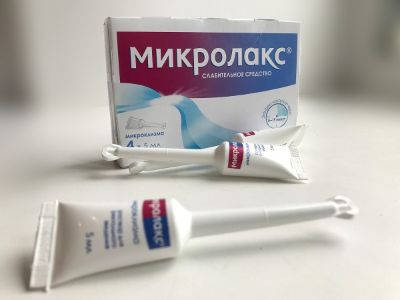
A regular pet enema can also be done at home. Microlax is available in pharmacies and the solution is fully prepared for use. The action of the enema is apparent after 15-30 minutes. During this time, it is better to keep the pet in the toilet, purely for hygienic reasons.
Microlax enema helps to empty the cats, which, due to overeating or stress, cannot go to the toilet by themselves. However, it is forbidden to take the product if the animal ate some foreign object in front of your eyes. It can come out naturally. And if this does not happen, you need to go to the doctor.
Composition and expiration date
For the health of the pet do not have to worry: the enema is not harmful to the body. Its components act in the intestine, they will not be absorbed into the bloodstream. This is why cats are prescribed enemas, and not oral agents.
These substances in small doses are safe for pets. There may be some side effects, but if the animal cannot go to the toilet for more than 3 days, it is a serious problem, and it should be solved by available means and quickly.
The storage conditions of the drug – the temperature should not exceed 20 C°, and it is desirable to keep the tube in a dark place. It is allowed to store in closed form for 5 years.
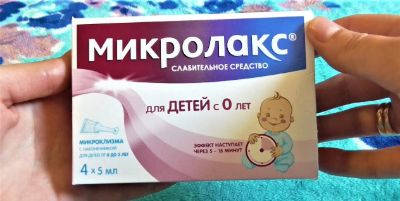
How to give a cat an enema with constipation correctly – step by step instructions
The procedure itself does not look so complicated. But you need to understand: any medical intervention will cause wariness and a categorical reaction of the cat. It is important to prepare for the procedure in advance, not to provoke negativity in the pet with a loud voice or atypical behavior. If the cat trusts you, feels safe – there will be no difficulties in carrying out an enema. The main thing is your mood: focus, act confidently and accurately.
Step one: Prepare the necessary tools
Veterinarians recommend proceeding with the event only with the support of a helper. This procedure is unpleasant for any creature. Given that the enema will be given to an adult pet – it is better to do it with assistance.
- A small syringe for 100 or 200 ml with a rubber tip. If the syringe has a larger volume – prepare strictly 150-200 ml for insertion. Plastic hard tips can cause pain in the cat even at the beginning of the procedure, there is no guarantee that you will get to do everything quickly and correctly.
- Tight rubber gloves.
- Plastic basin – so that it was convenient to take the syringe (you may need to do it twice – if you can't do it the first time) or another container with warm water (26-32 degrees).
- Rags, old newspapers or absorbent disposable diapers – to cover the floor in the "treatment room".
- Vaseline for lubrication – about 3 grams for an adult and 1-1.5 grams for a kitten. You can also use glycerin or baby cream if you have nothing else handy.
- Water thermometer. Hot water (more than 40 degrees) in case of severe intoxication of the cat may cause cramps.
- Ready solution for injection – water with a few drops of apple cider vinegar or vaseline.
- A litter box into which the cat can defecate after the procedure.
What not to do
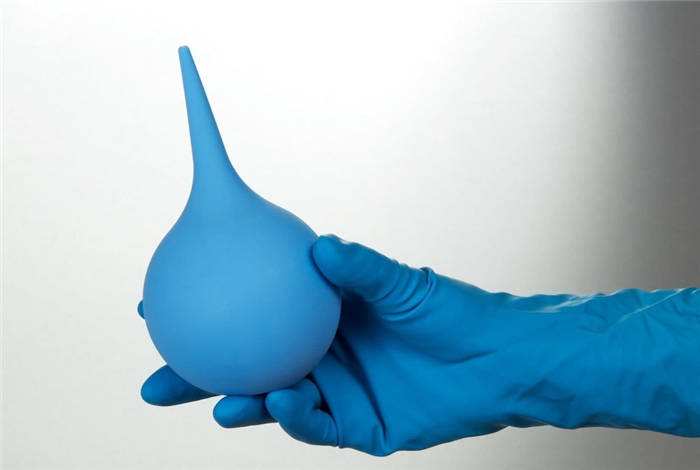
To carry out the procedure on their own is recommended only after consultation with a specialist:
- Also, you should not choose the compositions for enema on your own. One solution may be suitable for a cat, while the same mixture should probably not be administered in an enema to babies.
- If it is visually determined that the liquid is not entering the intestine – stop the procedure immediately. This may indicate that the feces are very thick, perhaps a lump of wool. It can also be a sign of an internal tumor.
- When the animal begins to resist violently – no need to use force. It is enough to give or inject a sedative into the cat – the procedure will be much easier.
An important point: if after 1-2 procedures the cat's defecation is still difficult, and only water comes out – urgently contact a specialist.
How to give an enema to cat at home
Contributor(s): Jamie Freyer, DVM. Dr. Jamie Freyer is a licensed veterinarian in Washington, DC. She has over 10 years of experience in veterinary medicine and clinical practice, specializing in veterinary medicine and surgery, animal behavior and animal genetics. She received her bachelor's degree in biology from Portland State University and her advanced veterinary training from Oregon State University.
Cat constipation is frustrating for both the animal and the owner, as it causes pain and discomfort for the cat and distress and stress for the owner from the pet's suffering. Doing an enema at home to treat constipation is quite difficult and requires a lot of patience, as it can take several minutes to an hour for hardened excrement to soften and come out. If your veterinarian trusts you and has given you permission to give your cat enemas at home, skip to step 1.
Recognize when an enema is needed
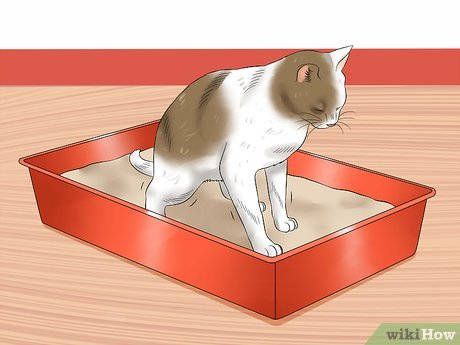
- Signs of constipation can be similar to signs of urolithiasis, which can be life-threatening for the cat. If you suspect your cat is having difficulty urinating, or if you don't see urine in the litter box for more than 12 hours, take your cat to the vet immediately to rule out urolithiasis.
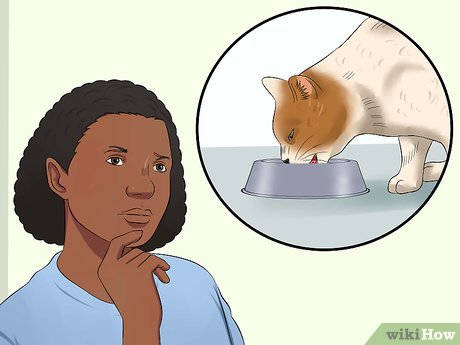
- Metabolic or endocrine disorders such as dehydration, electrolyte imbalances, or obesity can also cause constipation. Neurological problems of the spinal cord, pelvic injuries, or primary nervous system dysfunction can cause constipation in some cats.
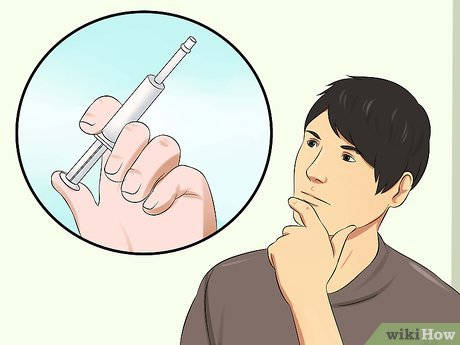
- Your cat may have complications if you notice changes in water intake, very low energy levels, severe vomiting, or loss of appetite. Sometimes, the cat may feel less hungry because of discomfort or a feeling of fullness, but will not refuse to eat.
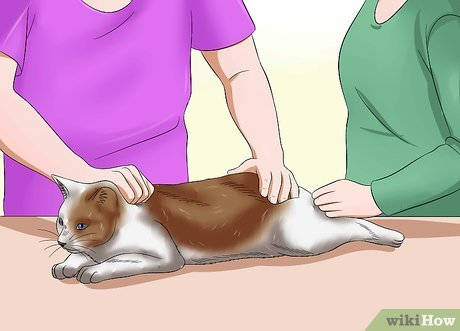
How to give an enema to a cat: algorithm of actions
Before carrying out the cleansing, it is useful for the owner to know what is needed for the enema and in what order it takes place. It will be safer to ask someone in the family to help, because pets perceive such procedures very poorly and offer strong resistance, trying to run away. Keeping the cat at this time is the main task of the helper.
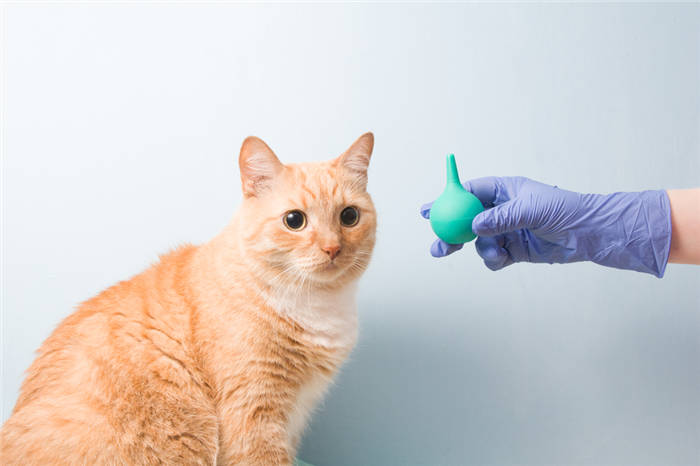
What you need to prepare
Before making an enema to the cat at home, it is necessary to prepare all the devices and materials, so that they are at hand. Purchase them in a regular pharmacy or veterinary clinic, some of them can easily be found at home. For an enema procedures you will need:
- A syringe in the form of a rubber bulb. Choose a version with a rubberized tip, which will not be able to traumatize the anus. The size of the syringe depends entirely on the age of the animal and varies from 150 ml for a kitten to 300 ml for an adult.
- A bowl for diluting the solution. As an infused liquid, ordinary water with the addition of a few drops of apple cider vinegar (can be replaced by lemon juice) and vaseline oil will do. Some doctors recommend adding a teaspoon of sea salt (for kittens – half a teaspoon). The temperature of the liquid should be 25-30 degrees.
- Additional supplies: Vaseline or baby cream to apply to the tip of the syringe, disposable gloves, a water thermometer, a convenient and spacious bowl for defecation.
In addition to all of the above, the owner will need patience, absolute calmness and a clear understanding of the algorithm of actions. If you start to get nervous, the pet will feel it and worry too.
Technique
Before you carry out the procedure, assess the situation: even the most peaceful and phlegmatic cat will not accept this method of treatment very well. The cat must be well secured so that it cannot harm itself or a person. Suitable are towels, soft cloth or straps, if there is a special collar, use it too.
Prevention of constipation
To reduce the number of digestive problems in cats you should pay attention to simple preventive measures. For example, timely grooming will eliminate the formation of hair clumps inside the stomach. They can prevent the passage of feces, accumulating in the gastrointestinal tract. To avoid such trouble, use pastes and phytomines. Well, cats spending time in the fresh air cope with this problem themselves: they eat grass, which causes vomiting and eruption of clumps of hair.
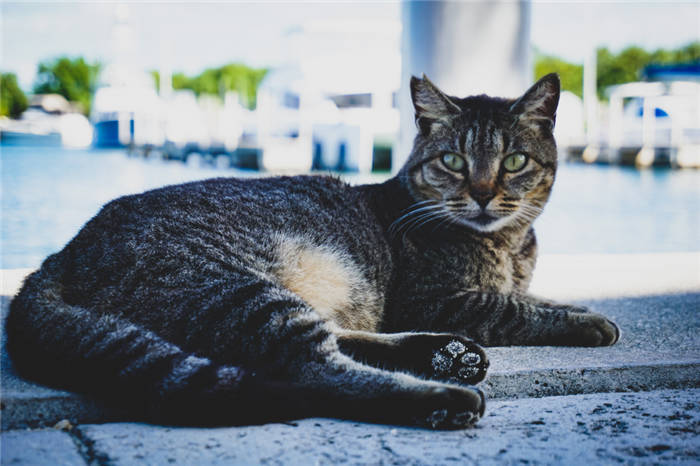
Physical activity plays an important role in preventing chronic constipation. An outdoor dog runs around outside day and night, but a furry houseplant that doesn't have access to the outdoors spends most of its time on the couch or bed. He doesn't move around much, usually eats a lot and often suffers from obesity. The owner should keep the cat in good physical shape with pet toys, special exercise equipment and fun houses.
Fibre should be included in the diet: it helps to clear the body of stagnant and accumulated feces. If the animal consumes dry industrial feeds, they should be of the highest quality only. Premium canned foods solve the problem with peristalsis well, but are not always a guarantee of good digestion.
Natural cat food should be enriched with vitamin and mineral complexes. Regularly in the diet should appear lean products of milk: kefir or cottage cheese. Pumpkin puree soups with the addition of a little vegetable oil are very useful for sluggish peristalsis sufferers. It is important to give the cat access to clean drinking water, as it will soften the stool and make it flow out better.
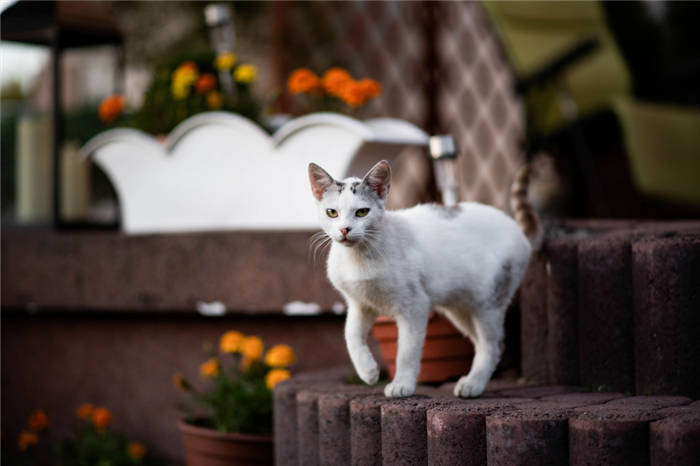
Recommendations for preparing for an enema
In order to perform the manipulation correctly, it is necessary to prepare properly.
Pay attention! It is extremely undesirable to use pears, syringes and ready-made cleansing compositions intended for people. The best enema for cats – bought in a special veterinary pharmacy
Unlike human enemas it does not contain phosphates, which are harmful to animals. Such enemas may contain sodium dioctyl sulfoccinate, which softens the fecal matter, and glycerin, which lubricates the small intestine from the inside.
The procedure is also performed with a special syringe, the thin tip of which is lubricated with regular Vaseline cream or other lubricant. This is a prerequisite for the most painless procedure unpleasant for the animal. The two-cup syringe is well suited for a warm mineral oil enema because it contains a urethral catheter used as an applicator. It has soft edges that do not irritate or traumatize the sick cat.
Manipulation of the enema is best done in a small room where water is available. Bathroom is ideal, in it you need to place a familiar cat tray with a favorite filler or a basin, and the door to the room for the time of the procedure is better to close.
Important! Wearing rubber gloves is recommended for safety and sterility
Microlax
When the reasons for constipation are unclear, it is dangerous to inject large amounts of liquid. If regular laxatives don't work, and you can't get to a doctor in the near future, the medicinal enema Microlax will help. Even newborn kittens are not harmed by this mild osmotic drug:
Sold in pharmacies, the tube contains 5 ml of gel – a dose for an adult. Before making an enema Microlax cat, the contents are squeezed into a spoon and filled into a syringe without a needle for easy dosing. For one time a third is enough, the effect will come in 5-15 minutes. Repeat the procedure after 12 hours at the earliest. Nose syringe is too short for an adult cat – it lengthened a piece of rubber tube from the dropper.
A new-born kitten weighing less than 300 grams – 0.1 ml of gel, over 300 grams – 0.3 ml. Such small doses are convenient to measure with an insulin syringe with a removable needle. The remainder is stored on the refrigerator door. Nose every time before and after wiping with an alcohol wipe, gel warmed to room temperature.





